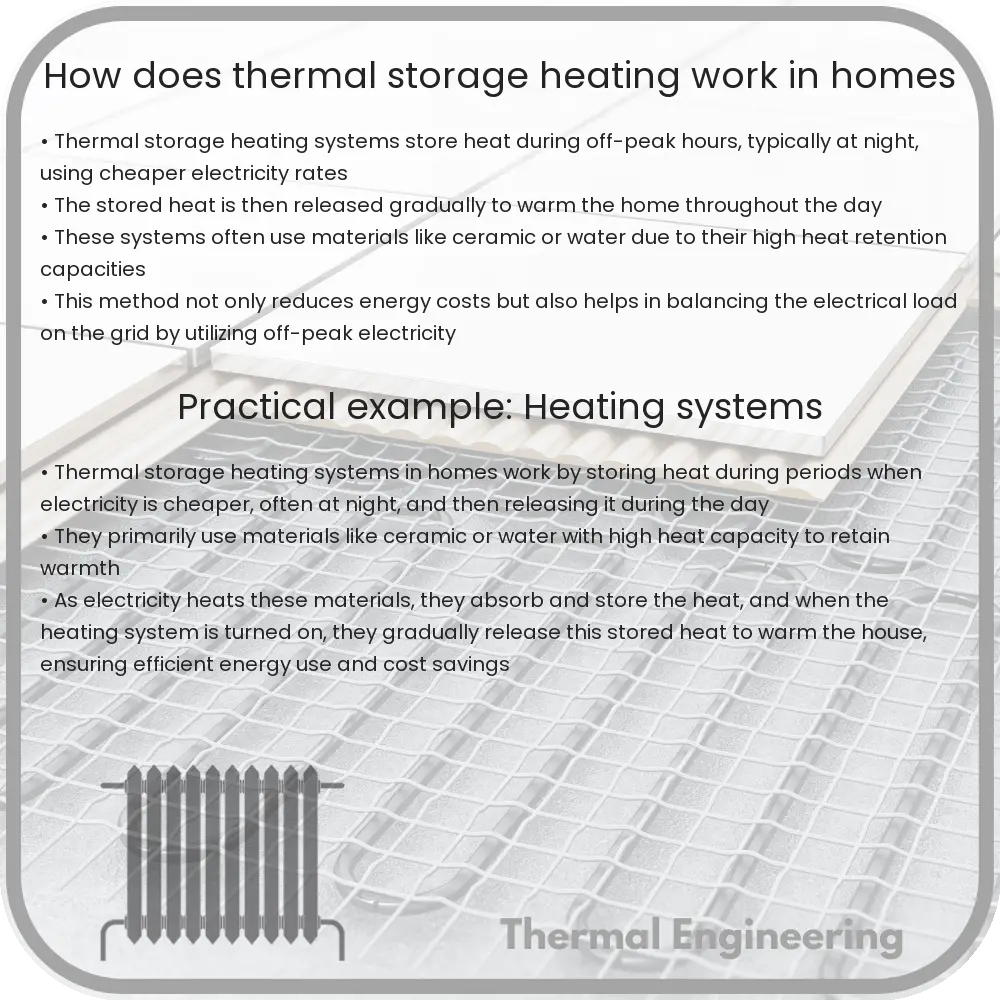Learn about thermal storage heating, a cost-effective system that stores heat during low-cost periods and releases it when needed for home temperature management.

Understanding Thermal Storage Heating
Thermal storage heating is a method used in homes to manage and optimize temperature by storing heat when it is available at a lower cost and releasing it when needed. This system is particularly effective in regions where electricity rates vary based on time of day or when alternative heating solutions are sought. Here, we will explore how this heating technology works, the types it involves, and its benefits.
Principles of Thermal Storage Heating
The basic principle behind thermal storage heating revolves around the use of heat-absorbing materials that retain large quantities of thermal energy. These storage systems are charged during off-peak hours when electricity rates are lower and energy is more abundant, and then discharge the stored heat during peak times when heating requirements increase.
Types of Thermal Storage Systems
- Sensible Heat Storage Systems: These systems use materials like water or ceramic bricks to store heat. Energy is stored by raising the temperature of these materials directly during off-peak times. Later, as the environment cools down, the stored energy is gradually released to heat the room.
- Latent Heat Storage Systems: These involve phase change materials (PCMs) that absorb and release heat by transitioning between states, such as solid to liquid and vice versa. This change of state occurs at a constant temperature, thus providing a consistent heat output.
- Thermochemical Storage: This type involves chemical reactions that either absorb or release heat. While not as common in domestic settings, thermochemical storage can offer higher energy densities compared to sensible and latent storage.
How Thermal Storage Heaters Operate
Let’s consider a typical sensible heat storage system used in homes. It includes a core of ceramic bricks or other suitable heavy materials that can store heat. During the night, when electricity costs are lower, electric heaters within the system heat up these bricks. The heater turns off once the bricks are sufficiently heated, having stored the energy absorbed during the night.
Throughout the day, the stored heat is slowly released into the indoor environment to maintain a comfortable temperature. The rate of heat release can often be adjusted via thermostatic controls, making it user-friendly and efficient.
Advantages of Thermal Storage Heating
- Cost Efficiency: By capitalizing on lower electricity rates during off-peak hours, these systems can significantly reduce heating costs.
- Energy Efficiency: Thermal storage heating can enhance energy efficiency by smoothing out the demand curve for electricity, helping to stabilize the grid.
- Flexibility: These systems provide consistent and controllable heating, improving comfort inside the home.
- Reduced Environmental Impact: Using thermal storage heating can lead to reduced greenhouse gas emissions by shifting energy use to times when renewable energy production might be higher.
Thermal storage heating represents a smart solution for managing home heating needs effectively, leveraging time-based energy rates and offering a more environmentally friendly approach to temperature control. As advancements in materials and technology continue, the efficiency and applications of thermal storage systems are likely to expand, making them an increasingly attractive option for homeowners.
Future Prospects
Future improvements in materials science could lead to more efficient phase change materials and better integration with renewable energy sources, further enhancing the viability of thermal storage heating systems. Additionally, with the growing trend towards smart homes, integrating these systems with IoT technology could lead to smarter, more responsive heating solutions that could dynamically react to changes in energy pricing and availability.